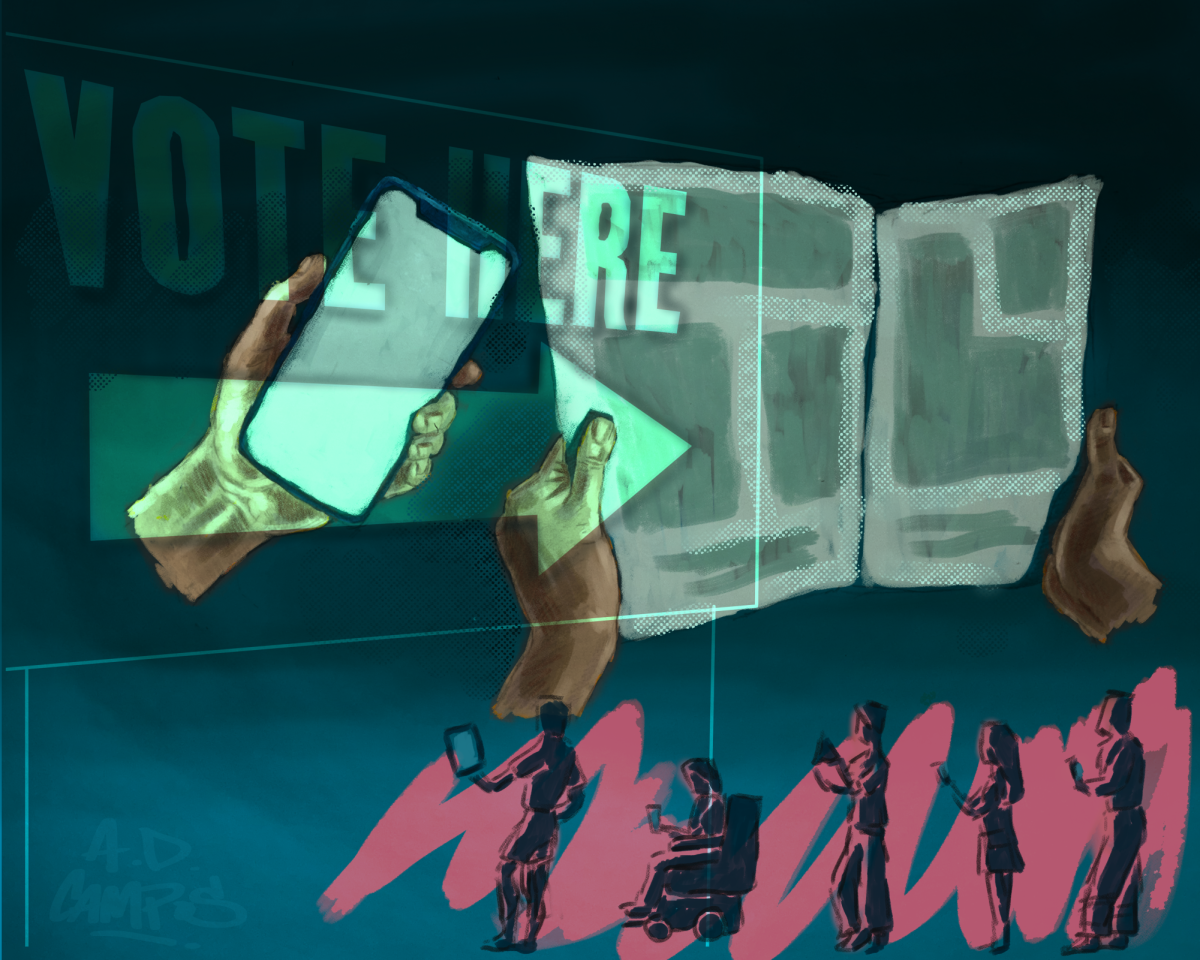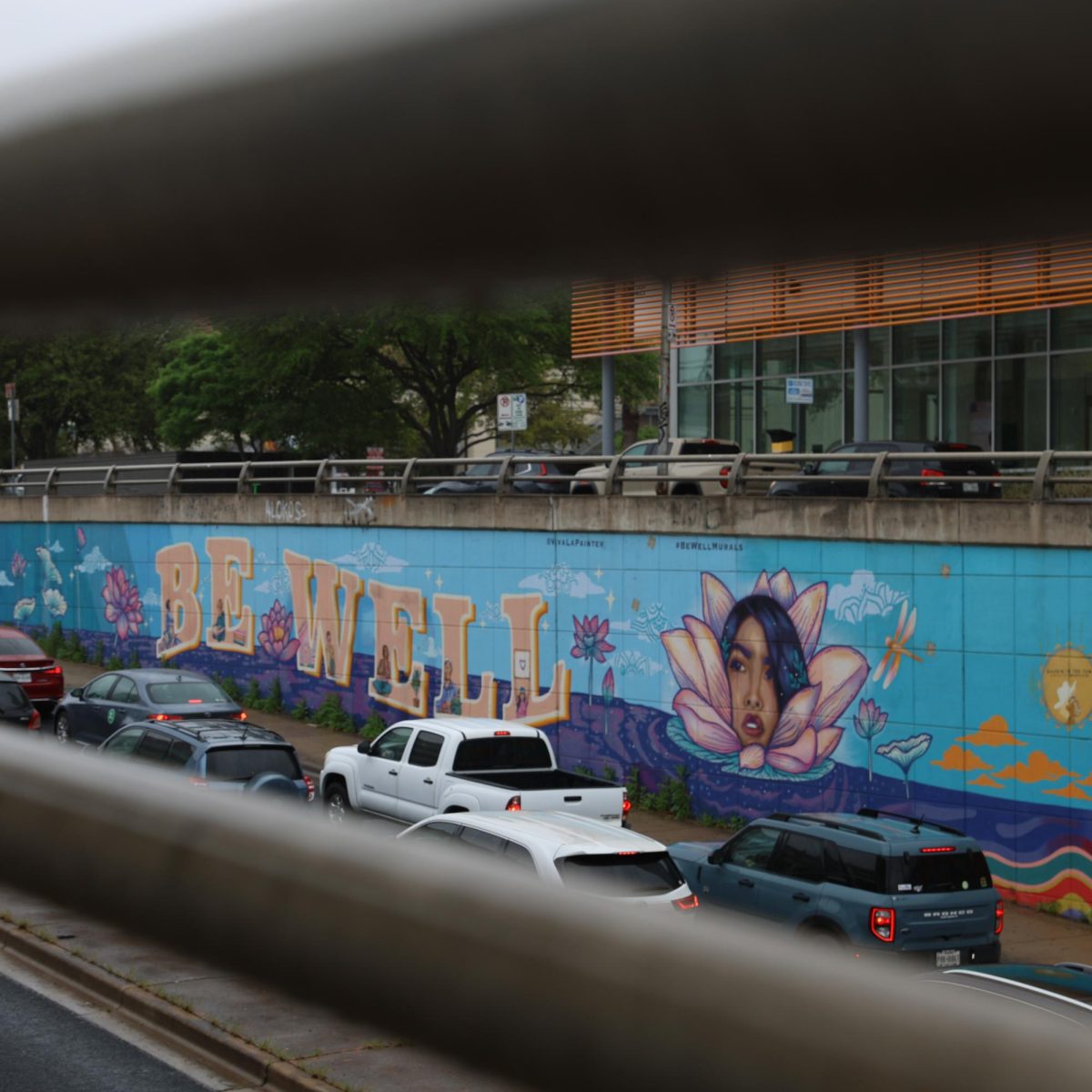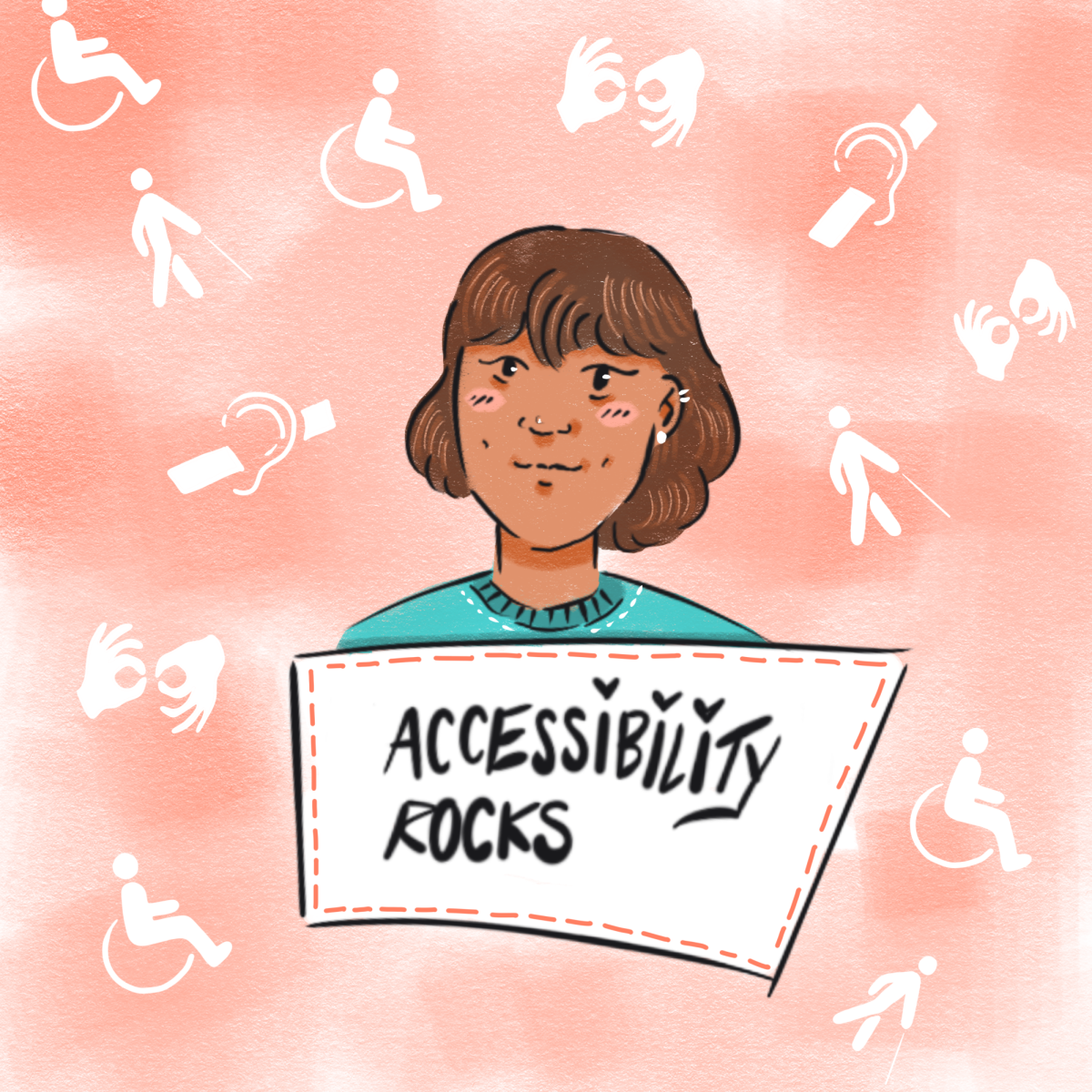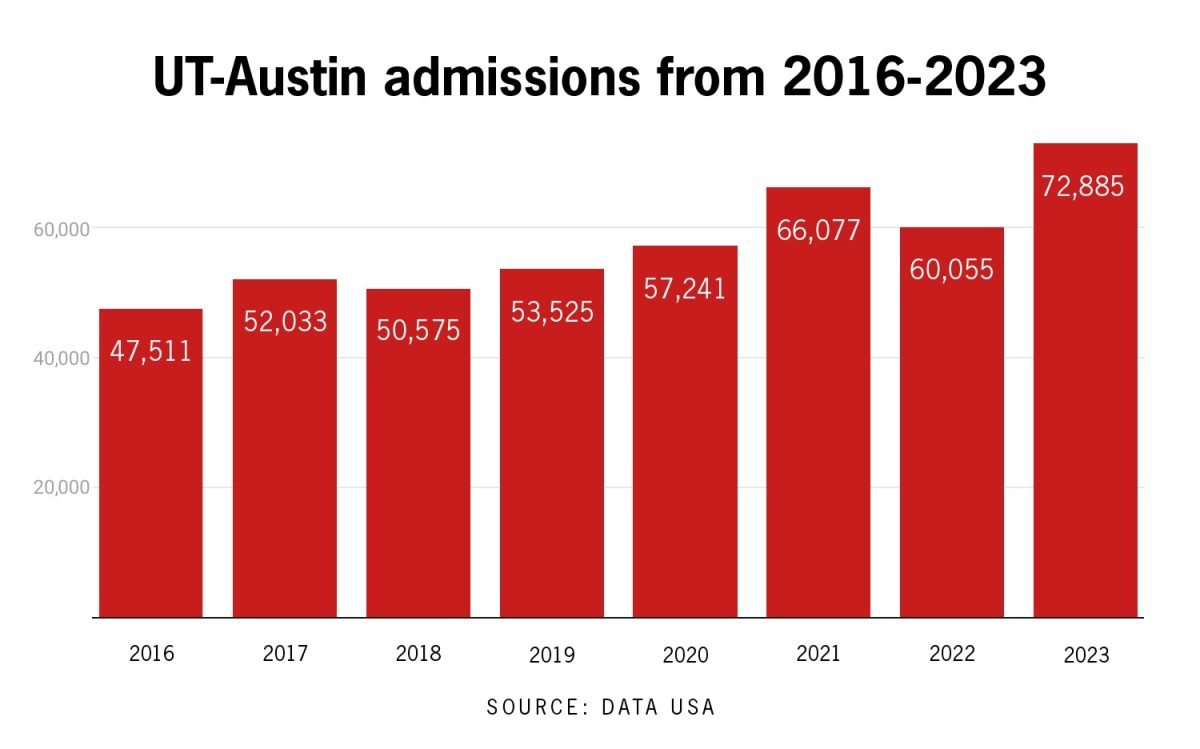The rise of digital platforms has transformed how young people access and engage with news media. In a media landscape where audiences increasingly choose what they consume, reliable, fact-based news media can help shape civic behaviors and electoral participation.
Paula Poindexter, professor of journalism and media, researches patterns of news media engagement across age groups. She said the shift from traditional media like newspaper and broadcast brought a downstream effect on generational understanding of news consumption, which interrupted an important learning flow.
“In a home where parents subscribe to at least one newspaper and have the television news on, children learn,” Poindexter said. “It’s observational learning, but they learned that this was important to do by just observing their parents. And their parents didn’t have to say anything.”
Journalism masters student Jennifer Castillo Cortes said that studies show that most members of Gen Z don’t like looking for news but prefer news to find them where they already are — usually on social media. For example, four in 10 young adults reported this year that they regularly get their news from TikTok. Poindexter said incorporating news into daily life can boost engagement with it.
“I discovered that if I analyze routine with frequency of engaging with news, those who have a routine are more likely to engage with news,” Poindexter said. “This is huge.”
However, a focus on digital news sources can create less engagement with local news. A study from the Center for Information and Research on Civic Learning and Engagement found that local news in particular can help young Americans, defined in the study as ages 18 to 29, feel more prepared to vote. Political academics suggest voting is also a learned behavior, often socialized similarly to other attitudes and behaviors.
“When students in particular, but also just people in general, do engage with the news and read the news, they’re more inclined to get civically involved, because they understand and are aware of the problems that are going on,” said Emma Hamilton, a Plan II and government junior. “Not everyone has the time or resources to start block walking or building a community garden, but you do have the ability to look further into the issue.”
Business honors freshman Maryam Zoweil said she primarily gets her news through Instagram, engaging with short-form content on policy, advocacy and current events ahead of the election, but tries to hold herself accountable by seeking out news from online publications on issues that stand out to her on social media.
“Getting your news from social media isn’t a bad thing, as long as you take the step to read more about it later on, because it’s a good opportunity to quickly raise your awareness,” Zoweil said. “If I see something that captures my attention, it’s like a motivating factor for me to actually read more into what the candidates are currently talking about.”
Through online news consumption, Zoweil said she is able to interact more meaningfully with political candidates’ platforms and the implications of their proposed policies.
Social media can also allow misinformation to spread quickly as the platforms reward engagement. Misinformation, defined as false or inaccurate information, differs from disinformation, which is deliberately spread to influence public opinion. Research shows that people are more likely to share misinformation when it aligns with personal identity.
“Going into election season, misinformation and disinformation are tantamount, because each vote matters,” Hamilton said. “People always forget about down ballot races, too.”
Mark Strama, communications professor of practice and director of the Annette Strauss Institute for Civic Life, said that a greater reliance on digital news sources also decreases the local news that people see and impacts what issues they learn about, including local candidates and races.
“It’s especially true among young people, (who) are just consuming their news from digital sources, and in part because those sources are digital, the sources are not localized,” Strama said. “It has caused a shift in political attention to national news that has made people much less civically literate about the issues that affect their local communities.”
Zoweil said she tends to focus on issues of personal resonance when consuming political news coverage, but she focuses much more on national and international news than local.
“I’ve realized that with a lot of my friends and classmates too, it’s like, you’re clicking, you’re clicking, you’re scrolling, you’re scrolling,” Zoweil said. “What’s going to capture your attention is something that affects you most directly.”
Zoweil said she also finds herself drawn to more conflict-based news coverage online, especially when it comes to coverage of the presidential debate, but she is trying to be more intentional about seeking out coverage of the candidates’ views on issues she cares about.
“How do I identify when I’m falling into that trap of like, ‘Oh, I’m only clicking on the things where they’re both yelling at each other, they’re both calling each other bad candidates,’ instead of actually noticing the points where they’re calmer, and they’re walking through their policies,” Zoweil said.
Communications professor Natalie Stroud conducted a 2019 study that found that Facebook users were more likely to click on articles with a strategy-framed headline, which characterizes elections through a competitive lens, rather than articles with an issue-framed headline, which focuses on where candidates stand on specific issues and how they differ.
Not only do readers gravitate towards strategy-framed coverage, but many news organizations respond to that and report on elections through that competitive lens, particularly as it gets closer to the actual election day. Issue coverage tends to come earlier in a campaign when people aren’t as engaged in the campaign cycle.
“Issue stances tend not to change dramatically over the course of an election, and once you’ve covered where the candidates stand on a particular issue, it’s difficult for journalists to keep repeating it or putting a fresh spin when the issue is the same,” Stroud said.
Hamilton said that partisan news media can provide an avenue for initial engagement with issues that are important to people, although this should be balanced with non-partisan forms as well.
“I think that partisan media does have the ability to convey the problem in a way that will make the people reading it understand through their own lens that they already have, the depth or breadth of the issue,” Hamilton said.
Zoweil said she tries to look at news sources presenting alternative perspectives after reading partisan news that aligns with her own views but can find that frustrating and sometimes turns to nonpartisan sources instead.
“If I’m going to consume something that might be polarizing from one stance, (then I’m) looking at something that’s polarizing but on the other side,” Zoweil said. “But that hasn’t really worked for me. It does cause some frustration. I try when I can, but then other times I just try and find less partisan sources to look at both sides in a way, see it from a more stepped-back approach.”
Cortes said that Gen Z is often drawn to news that doesn’t adhere to the traditional definition of objectivity, of presenting facts in a neutral way.
“Objectivity, for Gen Z, might mean not just giving two sides of a story,” Cortes said. “It’s not just being balanced or being fair or just sticking to the facts, but rather, ‘Tell me how these facts are actually impacting communities. Tell me why these facts matter.’”
Cortes said she has observed in her research that some people in Gen Z avoid mainstream news because they feel that it doesn’t properly portray their communities, but said that local news in particular is working toward improving coverage of marginalized communities.
Stroud raised the question of how polarizing issues can be better communicated without emphasis on partisan attitudes. The answer, Stroud said, could lie in local news, where trust levels tend to be higher than for mainstream national sources.
“There are moments where it doesn’t matter what your partisanship is,” Stroud said. “You want your local news. …Whatever community you live in, recognize the value of local news products, because no one else is covering things, and no one else is in touch with the community in the way that local newsrooms are.”













